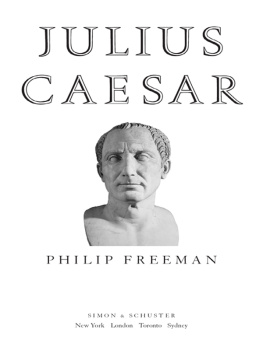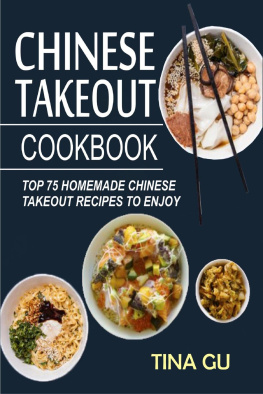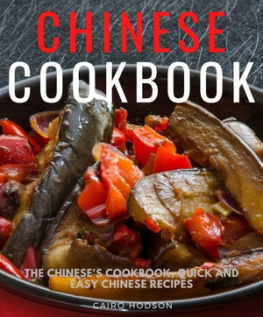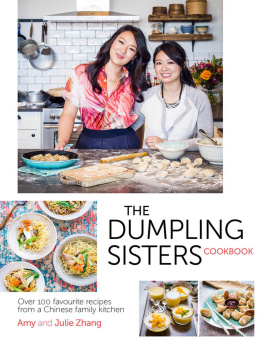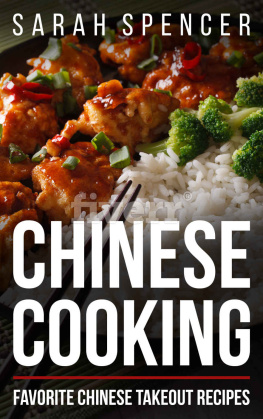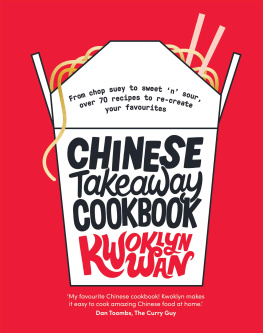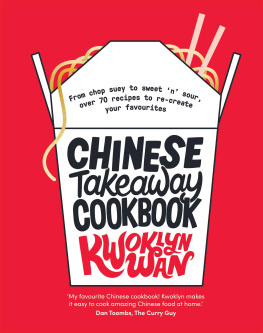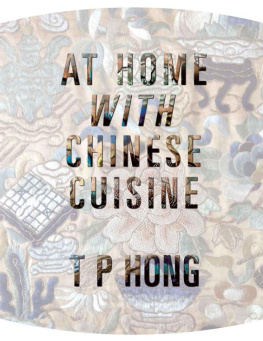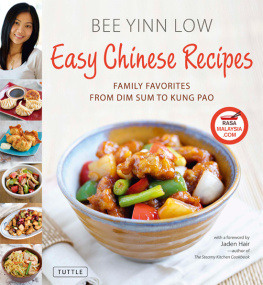The Ultimate Chinese Recipe Collection
Chinese Cookbook for Delightful Home Cooking
BY: SOPHIA FREEMAN
2020 Sophia Freeman All Rights Reserved
Liability
This publication is meant as an informational tool. The individual purchaser accepts all liability if damages occur because of following the directions or guidelines set out in this publication. The Author bears no responsibility for reparations caused by the misuse or misinterpretation of the content.
Copyright
The content of this publication is solely for entertainment purposes and is meant to be purchased by one individual. Permission is not given to any individual who copies, sells or distributes parts or the whole of this publication unless it is explicitly given by the Author in writing.
My gift to you!
Thank you, cherished reader, for purchasing my book and taking the time to read it. As a special reward for your decision, I would like to offer a gift of free and discounted books directly to your inbox. All you need to do is fill in the box below with your email address and name to start getting amazing offers in the comfort of your own home. You will never miss an offer because a reminder will be sent to you. Never miss a deal and get great deals without having to leave the house! Subscribe now and start saving!
Table of Contents
Introduction
China has the longest living civilization in the world.
Its culture and tradition are very much alive in their cooking.
Chinese regard food as a source of 'qi' or life source and energy.
They follow the principles of balance or yin and yang in food selection.
There are eight major cuisines in China.
Shandong cuisine or Lci is characterized by beautifully presented dishes that have umami, moderately salty, and sweet and sour taste.
Sichuan cuisine or Chunci is known for its really spicy and pungent dishes that can numb your mouth.
Cantonese cuisine or Yuci is the most popular Chinese dishes outside China since most restaurants in the west are Cantonese. It features mildly seasoned dishes to highlight its natural flavors.
Jiangsu cuisine or Sci features soft and delicately flavored dishes that are simmered, braised, or stewed and are often served lavishly.
Zhejiang cuisine or Zhci, on the other hand, uses mostly fresh fish and seafood, vegetables that are in season, and rice.
Fujian cuisine or Mnci has a sweet and sour taste due to the use of red vinasse, sugar, and vinegar in cooking.
Hunan cuisine or Xingci has hotter and spicier flavors than Sichuan. It is cooked with a lot of both dried and fresh chilies.
And finally, Hui cuisine or Huci features slowly cooked dishes with less mainstream ingredients like turtle and partridge.
This book features a little of each of these cuisines, and for sure, youll be delighted to try all the recipes that youll find here.
Additional Interesting and Useful Information
Chinese cuisine is the second most popular in the world.
Chinese are also known for their traditional medicine that is often intertwined with their cooking.
Authentic Chinese food requires the use of fresh ingredients that are in season. In most cases, the animal is killed just before it is cooked to maintain its freshness.
Chinese dont like to misuse food. They will incorporate the heads, feet, and internal organs in their recipes to make sure that it is not wasted.
Be mindful of splinters when eating dishes with bones. Chinese consider the meat attached to the bone to be the finest. They chop meat and shatter the bones to release the marrow that adds more flavor to the dish.
Kung Pao Veggies
Kung Pao sauce is widely used in Chinese cuisine. It is made by mixing vinegar, soy sauce, sugar and spices like cloves, anise and cinnamon. In this recipe, we use this sauce to flavor up broccoli and bell peppers.
Serving Size: 4
Preparation Cooking Time: 35 minutes
Ingredients:
2 teaspoons sesame oil (toasted)
2 teaspoons soy sauce
1 tablespoon hoisin sauce
tablespoons balsamic vinegar
teaspoon Chinese five-spice powder
2 teaspoons cornstarch
cup water
2 tablespoons peanut oil
1 red bell pepper, diced
1 green bell pepper, diced
1 yellow bell pepper, diced
5 cups broccoli florets
2 scallions, chopped
1 tablespoon ginger, minced
2 cloves garlic, minced
teaspoon red pepper flakes
cup roasted peanuts
Instructions:
1. First, in a bowl, combine the sesame oil, soy sauce, hoisin sauce, balsamic vinegar, five-spice powder, cornstarch and water.
2. Add the peanut oil to a pan over medium high heat.
3. Stir fry the bell peppers and broccoli for 5 to 6 minutes.
4. Stir in the scallions, ginger, garlic and red pepper flakes.
5. Next, cook for 30 seconds, stirring often.
6. Reduce heat to medium low and pour in the sesame oil mixture.
7. Cook for 1 minute or until the sauce has thickened.
8. Sprinkle the roasted peanuts on top before serving.
Nutrients per Serving:
Calories 259
Fat 18.8 g
Saturated Fat 3 g
Carbohydrates 18.1 g
Fiber 4.9 g
Protein 8.5 g
Cholesterol 10 mg
Sugars 6 g
Sodium 212 mg
Potassium 580 mg
Chongqing Chicken
Chongqing chicken is a traditional Chinese dish made by cooking chicken with dried chili peppers and Sichuan peppercorns.
Serving Size: 4
Preparation Cooking Time: 40 minutes
Ingredients:
1 lb. chicken thigh fillets, sliced into cubes
3 tablespoons Shao Hsing rice wine
Salt to taste
2 tablespoons cornstarch
3 tablespoons vegetable oil, divided
4 scallions, chopped
2 cloves garlic, sliced thinly
1 tablespoon ginger, minced
1 tablespoon Sichuan peppercorns
1 cup Asian red chili peppers (dried)
2 teaspoons Sichuan chili paste
teaspoon sugar


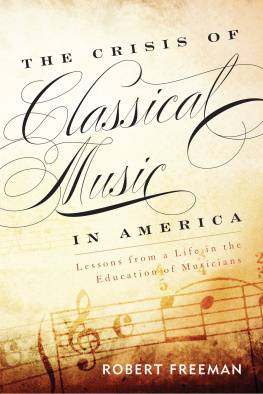

![Freeman - Pro design patterns in Swift: [learn how to apply classic design patterns to iOS app development using Swift]](/uploads/posts/book/201359/thumbs/freeman-pro-design-patterns-in-swift-learn-how.jpg)
